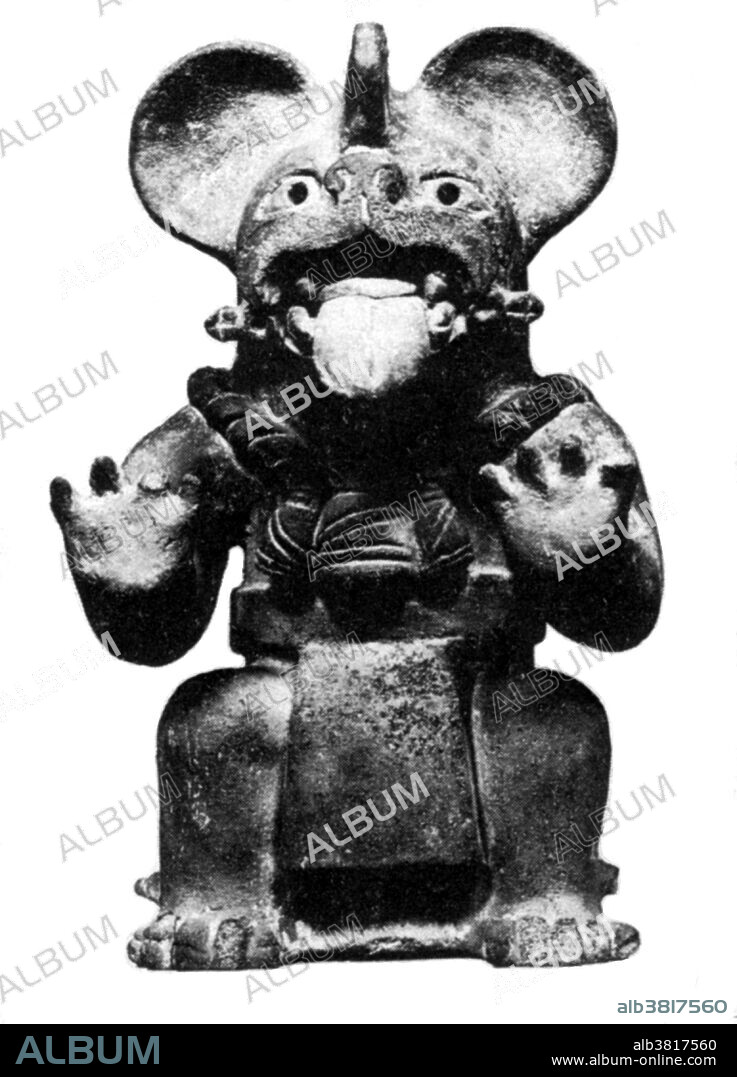alb3817560
Were-Jaguar, South American Werewolf

|
Ajouter à une autre Lightbox |
|
Ajouter à une autre Lightbox |



Avez-vous déjà un compte? S'identifier
Vous n'avez pas de compte ? S'inscrire
Acheter cette image.
Sélectionnez l'usage:

Titre:
Were-Jaguar, South American Werewolf
Légende:
Voir la traduction automatique
The were-jaguar is an Olmec motif and a supernatural entity. People believed the were-jaguar was tied to a myth of a male jaguar an a female mating. The Olmec believed the jaguar to not only be a special creature but to be associated with the cause of fertility and rain. The shamans would put on the skin of the jaguar to be transformed into a were-jaguar. The shamans worshiped the were-jaguar and still do till this day. A werewolf, in European folklore, is a man who turns into a wolf at night and devours animals, people, or corpses but returns to human form by day. Some werewolves change shape at will; others, in whom the condition is hereditary or acquired by having been bitten by a werewolf, change shape involuntarily, under the influence of a full moon. If he is wounded in wolf form, the wounds will show in his human form and may lead to his detection. Belief in werewolves is found throughout the world. The psychiatric condition in which a person believes he is a wolf is called lycanthropy. In French folklore, the werewolf is called loup-garou. France was particularly afflicted with reports of them in the 16th century, and there were many notable convictions and executions of loups-garous.
Crédit:
Album / Science Source / New York Public Library
Autorisations:
Taille de l'image:
3300 x 4586 px | 43.3 MB
Taille d'impression:
27.9 x 38.8 cm | 11.0 x 15.3 in (300 dpi)
Mots clés:


 Pinterest
Pinterest Twitter
Twitter Facebook
Facebook Copier le lien
Copier le lien Email
Email
